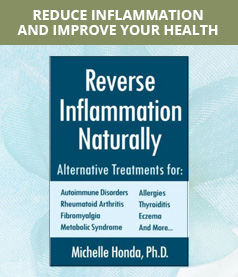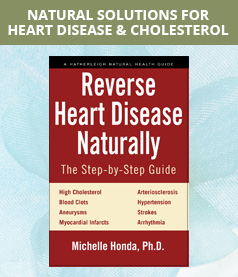
Today, we have an arsenal of natural fighting tools, designed for prevention and treatment of diabetes whereby reducing or eliminating ones dependency on medication.
Patient Case History: Male 74 years of age came to see me with Type 2 Diabetes then taking 60 units of insulin per day and reduced to 30 units per day in less than 2 weeks using 1 herb and small amount of fresh juice. Many remedies are included further into this article.
Myths of Type I Diabetes
Research abounds, dispelling the myths of predisposition being the soul culprit for Type 1 Diabetes. The term predisposition simply means “something else needs to occur.” Conventional medicine and the diabetic organizations, for the most part consider type one to be a genetic disorder.
Currently, more than twenty different genetic aspects (genotype) have been implicated as genetic factors that increase a person’s susceptibility to the disease. Genetics can be the most important factor for some; however, this number is only in the range of five to fifteen percent of those with genetic susceptibility for type one diabetics who actually develop it.
What Steps Should Be Taken?
More research in the area of identifying and assessing risk factors. Dietary and environmental factors are the primary influences that will ultimately determine whether or not, the disease manifests. To reinforce the evidence of other factors; throughout the world over the past fourty years, type one diabetes has increased from a three to a tenfold. Our genetic code takes more than one generation to change.
Risk Factors for Type 1
- Early exposure to cow’s milk and gluten (the protein in grains).
- Specific viruses known as Enteroviruses and Rotavirus are a common cause especially in children. These viruses and others have an ability to infect pancreatic beta cells by stimulating the immune system to attack the beta cells in an effort to destroy the viruses. The leaky gut syndrome usually results from the rotaviruses and is the main irritant of acute diarrhea in children.
- Nitrosamines are byproducts of nitrates found in cured and smoked meats, also a common contaminant in drinking water through agricultural runoff from nitrogen fertilizers. Food additives and chemicals are linked to type 1 diabetics because they generate free radicals which damage the insulin producing cells of the pancreas (beta cells), destroying cellular components.
- Improper balance of gut flora which plays a major role in our immune system.
- Avoidance of food allergies. Early signs of immune system response may be chronic ear infections, asthma and eczema. The most common allergens are dairy products, wheat, corn, citrus, peanuts, eggs, soy and foods containing artificial coloring.
- Deficiencies of vitamin D and essential fatty acids contribute to Type 1 Diabetes. Fish oils offer significant protection against the onset of diabetes because of its high vitamin D content. Studies reveal children who regularly took cod liver oil had an eighty percent reduced risk of developing Type 1 Diabetes while children with a vitamin D deficiency had a three hundred percent risk of developing the disease. Furthermore, women who consumed cod liver oil during pregnancy greatly reduced the incidence of type 1 diabetes in their children. Omega-3 fatty acids found in fish oils have an equally protective value necessary for healthy cell membranes.
Natural Therapies for Diabetes: Type 1 and Type 2
- Gymnema Sylvestre is a vine related to milkweed, well known in Ayurvedic medicine for its blood sugar lowering action and suggested it may also help with weight loss and sugar cravings.
- Cinnamon is no longer just a delicious condiment. Recent studies, suggests this spice can improve insulin sensitivity and glucose metabolism. In addition, by taking more cinnamon, three to six grams compared to one gram, the blood levels of fats and triglycerides were lower.
- Alpha lipoic acid is a common German treatment for diabetes and one of the most powerful antioxidants. Cell damaging free radicals are neutralized by alpha lipoic acid, protecting our bodies by enhancing nerve health, lessening neuropathy and reduced oxidative stress from persistent high blood glucose.
- Bitter Melon is a traditional Asian remedy for diabetes. Unripe bitter melon has active agents that affect glucose metabolism, including an insulin resembling molecule.
- Essential fatty acids (EFA’s) in the form of evening primrose, borage and fish oils are critical for diabetics and people with insulin resistance. EFA’s strengthen immune cells, and promote healthy cell membranes otherwise insulin binding receptor cells may be impaired, triggering impaired glucose intolerance (IGT).
- Chromium, a trace element also called glucose tolerance factor (GTF) plays a prominent role in blood sugar control and works closely with insulin in facilitating the uptake of glucose and other nutrients into the cells.
- A healthy diet and lifestyle should accompany dietary supplements. Weight control will greatly reduce ones risk of diabetes. Refer to the glycemic index of the foods you eat, limiting the amount of refined sugar and flour products.
Assessing Diabetes Mellitus through Iris Analysis
Iridology is a science performed by analyzing the iris (coloured portion of the eye), that surrounds the pupil. The iris is the most complex external structure of the human anatomy, connected to every organ and tissue in the body, via the brain and nervous system.
There are specific markings in the iris, symbolizing pancreatic insufficiency, which are inherited showing potential for diabetes long before a blood test reveals the onset of the disease. Organs and glands such as the liver, gallbladder, thyroid, kidney and adrenals when insufficient, play a role in the disturbance of glycogen.
As part of my dissertation entailing diabetes, all twenty five case histories had inherited pancreatic weakness demonstrated in their iris. Of the twenty five cases, most had other glandular weakness marked in their irises. The results of predisposition markings were as follows: Liver 19, Gallbladder 19, Kidney 23, Thyroid 21 and Adrenal glands 14. The findings were substantiated with individual iris photographs.
Iridology enables us to look ahead and catch a glimpse of what might be. Looking at the iris gives us direction, for implementing lifestyle changes before problems occur. Prevention is our most discerning form of health care. Unfortunately, in today’s society, we are overfed and undernourished. Irregardless of our life’s priorities, we can help ourselves by helping our bodies strengthen our inherited weaknesses, through good nutrition, exercise and healthy attitudes.
Copyright © 2017 – All Rights Reserved – Michelle Honda Ph.D.
Announcement
Look for my new forthcoming books “Reverse Heart Disease Naturally” (Jan.31, 2017) and “Reverse Inflammation Naturally” (May 31, 2017) and “Reverse Thyroid Diseases Naturally” (Fall 2017)
Where to Purchase:
Reverse Gut Diseases Naturally
Reverse Heart Disease Naturally
Hatherleigh Press Page Buy Book RGDN
Local Book Stores in US and Canada
Disclaimer
While close attention was given to the accuracy of information in this article, the author accepts neither responsibility nor liability to any person with respect to injury, damage, loss or any circumstances involving alleged causes directly or indirectly related to the information in this article. The sole purpose is to educate and broaden ones awareness. This information is not meant to replace medical advice or services provided by a health care professional.













Follow Us!